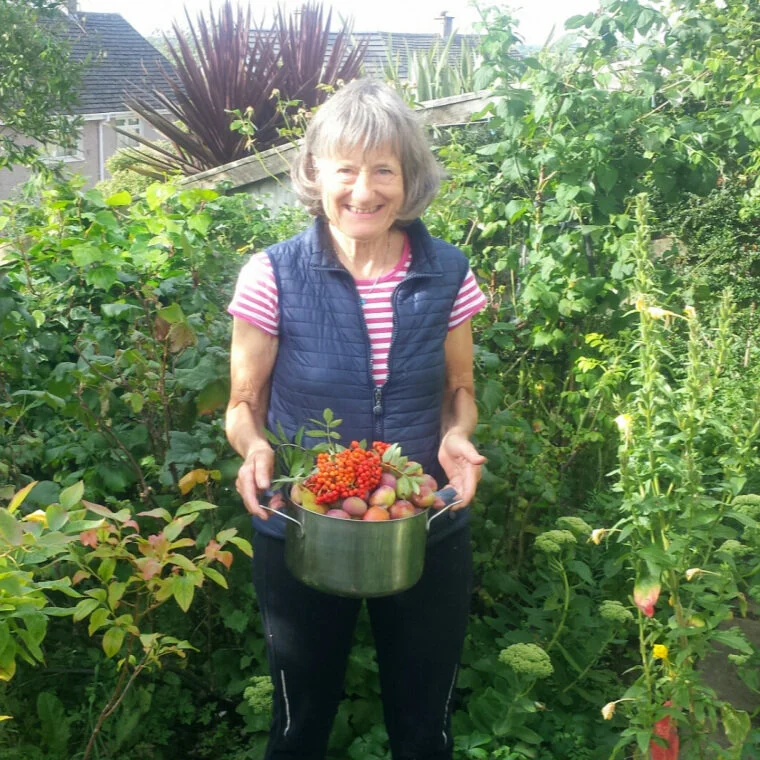Edible Front Yards and Sensory Gardens
Regenerative-garden designer Jennifer Lauruol talks about edible front yards, sensory gardens, and native plants.
Jennifer Lauruol weaves together permaculture concepts, native plants, food plants, forest gardening, and educational elements in her regenerative-garden design work in Lancaster, England.
Her passion is edible ornamental gardening—especially in front yards.
Lauruol also uses many native plants in her designs. She finds that effective design helps people interpret the use of native plants as a garden.
Edible Front Yards
Lauruol recalls a neighbour’s concern that children might steal the fruit that Lauruol was growing in her front yard. Yet that was exactly her goal: that children would enjoy the fruit and learn where it comes from.
She says that a well-planned garden can have a succession of edible fruits and ornamental plants. Another way to weave edible plants into a landscape is to create an edible hedge.
While edible front gardens might not appeal to everyone’s taste, Lauruol does have a tip for gardeners worried about sceptical neighbours: “I do know what to do about the diehards: give them strawberries,” she says.
Native Plants
Lauruol explains that having a mown strip around plantings of native plants helps people understand it as something intentional. “If you create a frame around it then people can understand it,” she says.
Her own design with native plants is strongly influenced by Brazilian artist, painter, and landscape architect Roberto Burle Marx, who used big blocks of colour in his work. She says planting native plants in large drifts, as opposed to mixed plantings, is an approach that is less likely to be interpreted as sloppy.
Sensory Gardens
Lauruol creates sensory gardens for people with special needs. Her focus on sensory gardens stems from her own experience with her daughter Marie, who has special needs. “She comes alive when she is in nature,” says Lauruol, adding, “For me, the base of a sensory garden really needs to be a wildlife garden.”
Senses to stimulate with a sensory garden:
Sound. The sense of sound is often overlooked in garden design..
Sight. Lauruol likes to make colourful planting in the shape of a rainbow so visitors get a very strong sense of each colour
Taste.
Smell. “Different kinds of scent are like an orchestra,” says Lauruol. She says to remember scents other than floral scents, such as compost with its woody notes.
Touch.

